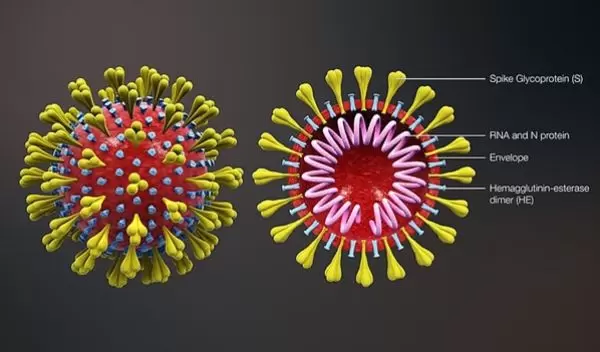
First complete coronavirus model shows cooperation
The virus that causes COVID-19 holds many mysteries. Scientists remain in the dark on aspects of how it fuses and enters the host cell, and how it assembles and buds off the host cell.
Computational modeling combined with experimental data provides insights into these behaviors. But modeling the dynamics of the SARS-CoV-2 virus over meaningful timescales has so far been limited to its pieces, such as the spike protein, a target for the current round of vaccines.
A new multiscale coarse-grained model of the complete SARS-CoV-2 virion -- its core genetic material and shell -- has been developed for the first time using supercomputers. The model offers scientists new ways to exploit the virus's vulnerabilities.
"We wanted to understand how SARS-CoV-2 works holistically as a whole particle," said Gregory Voth of the University of Chicago. Voth is the corresponding author of a study that developed the first whole virus model, published in the Biophysical Journal.
"We developed a model," said Voth, "where we took information from molecular dynamics simulations and from experiments." The results of the U.S. National Science Foundation-funded study show how the spike proteins on the surface of the virus move cooperatively.
"They don't move independently like random, uncorrelated motions," Voth said. "They work together."
This cooperative motion of the spike proteins is indicative of how the coronavirus detects the ACE2 receptors of a potential host cell.
In the study, Voth and his team used the Frontera supercomputer. The NSF-funded Frontera system is operated by the Texas Advanced Computing Center at The University of Texas at Austin.
"We typically envision viruses as static things, which limits our understanding of their changing ability to infect host cells," said P. Shing Ho, a program director in NSF's Division of Chemistry. "This study gives scientists a set of molecular tools that will help investigate how emerging variants of SARS-CoV-2 virus potentially affect the transmissibility of COVID-19."


